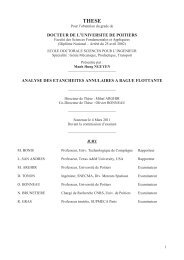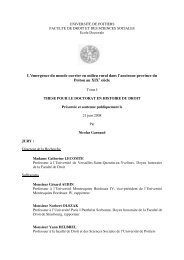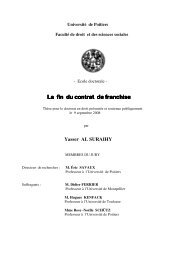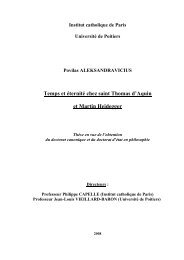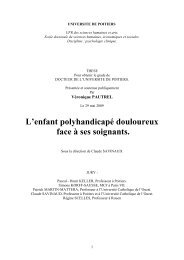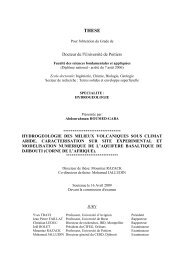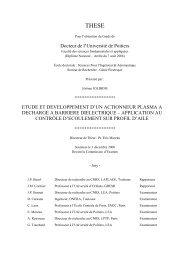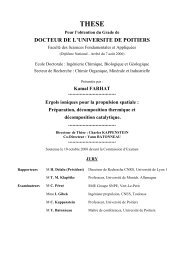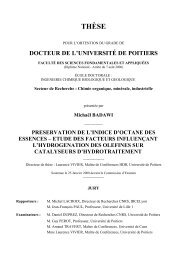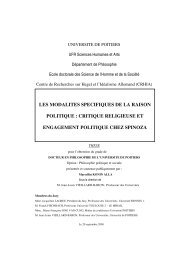Consulter le texte intégral de la thèse - Université de Poitiers
Consulter le texte intégral de la thèse - Université de Poitiers
Consulter le texte intégral de la thèse - Université de Poitiers
You also want an ePaper? Increase the reach of your titles
YUMPU automatically turns print PDFs into web optimized ePapers that Google loves.
et NBD2 (Nuc<strong>le</strong>oti<strong>de</strong> Binding Domain), et un domaine régu<strong>la</strong>teur (Sheppard et al., 1999;<br />
Figure 7).<br />
Figure 7 : Schéma illustrant l’organisation <strong>de</strong> <strong>la</strong> protéine CFTR.<br />
MSD 1&2 : Membrane Spanning Domain 1&2 (domaines transmembranaires),<br />
NBD 1&2 : Nuc<strong>le</strong>oti<strong>de</strong> Binding Domain 1&2 (domaines <strong>de</strong> fixation <strong>de</strong>s nucléoti<strong>de</strong>s),<br />
R : Regu<strong>la</strong>tory Domain (domaine régu<strong>la</strong>teur),<br />
P : Sites <strong>de</strong> phosphory<strong>la</strong>tion par <strong>le</strong>s protéines kinases A et C.<br />
(D’apres http://physpharm.ohsu.edu/faculty/Dawson Lab)<br />
2.1 Les domaines transmembranaires TMD1 et TMD2<br />
Les <strong>de</strong>ux domaines transmembranaires interviennent dans <strong>la</strong> formation du pore. Le<br />
domaine TMD1 joue un rô<strong>le</strong> important dans <strong>la</strong> conductance et dans <strong>la</strong> sé<strong>le</strong>ctivité du canal<br />
CFTR (Davis et al., 1996). Les segments membranaires M1, M5, M6, et M12 sont impliqués<br />
dans <strong>la</strong> zone formant <strong>le</strong> pore (Tabcharani et al., 1992; McDonough et al., 1994; Schwiebert et<br />
al., 1998). Des changements <strong>de</strong> conformation du segment M6 (passage d’une hélice à un<br />
feuil<strong>le</strong>t ß) influent sur <strong>la</strong> sé<strong>le</strong>ctivité et l'ouverture du canal (Wig<strong>le</strong>y et al., 1998).<br />
2.2 Le domaine <strong>de</strong> régu<strong>la</strong>tion R<br />
Ce domaine correspond aux résidus 590 à 831 codés par l’exon 13. Il est spécifique du<br />
canal CFTR. La phosphory<strong>la</strong>tion du domaine R par <strong>le</strong>s protéines kinases A et C (Yurko-<br />
Mauro & Reenstra, 1998) est nécessaire à l'ouverture du canal par <strong>le</strong> MgATP (Riordan et al.,<br />
<br />
<br />
37



